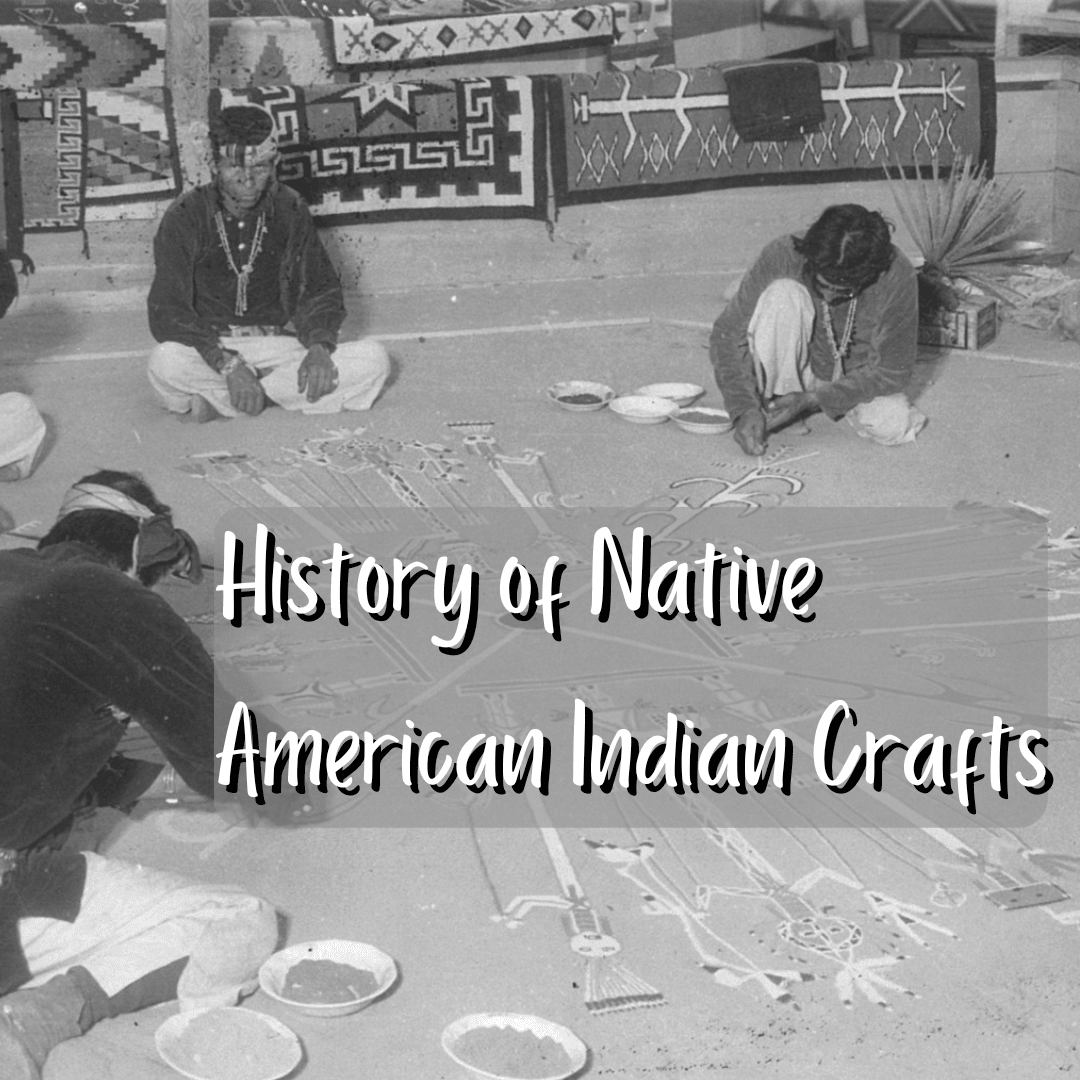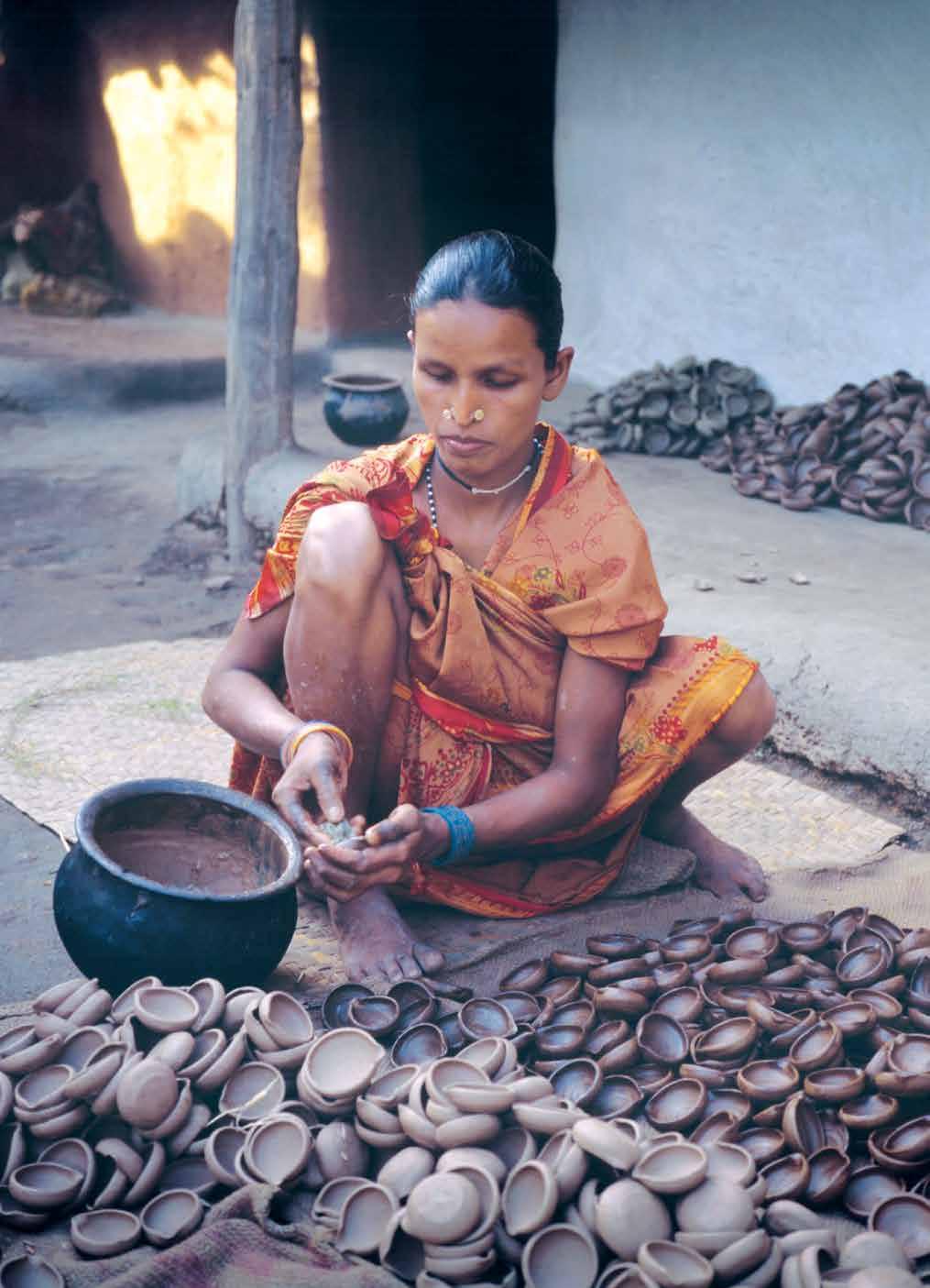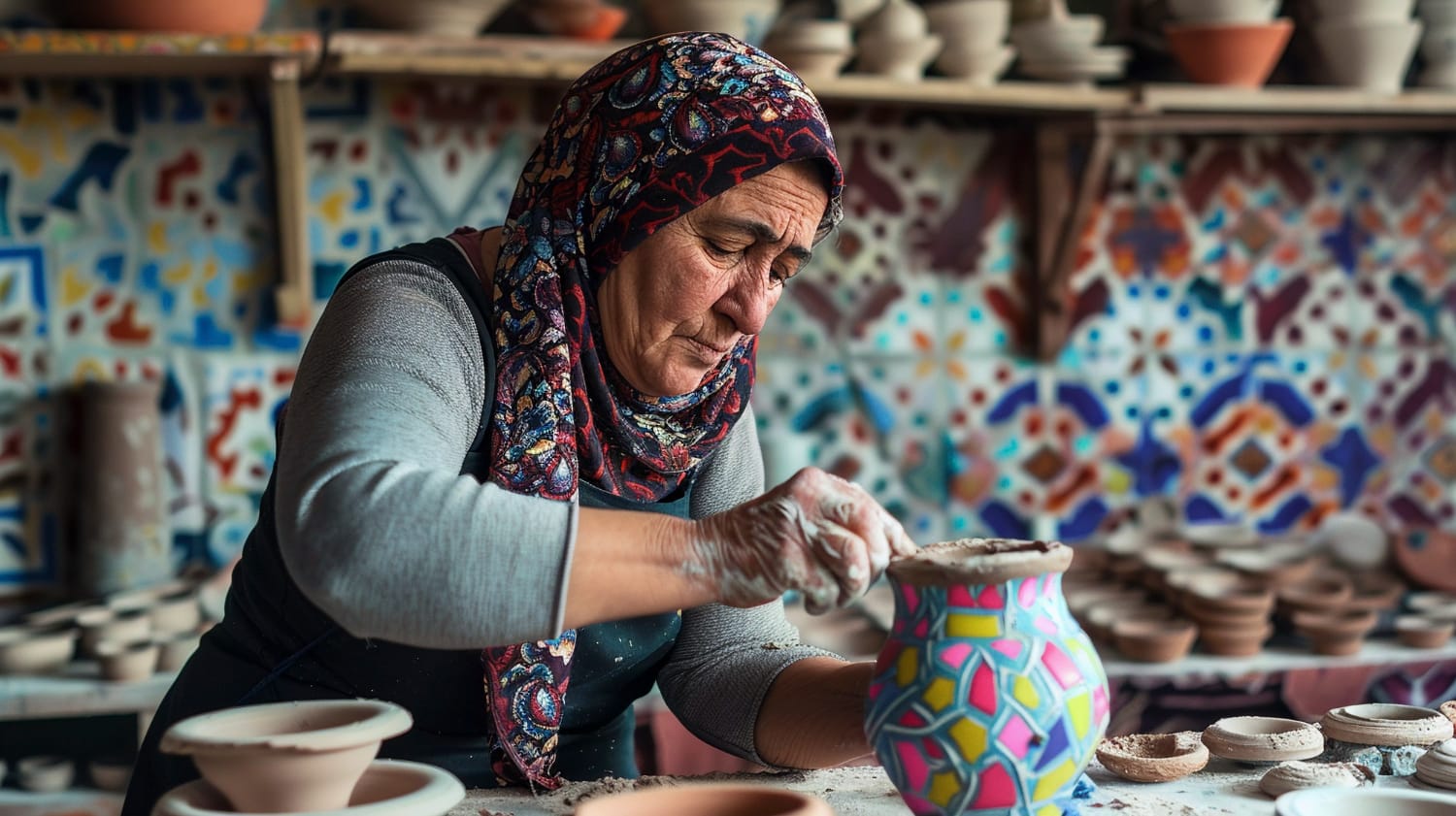The evolution of crafting skills: from traditional to contemporary

The Evolution of Craftsmanship
Craftsmanship is not merely about the creation of objects; it embodies a rich legacy that intertwines culture, identity, and innovation. Historically, crafting skills have undergone significant transformations, moving from the meticulous methods of traditional artisans to the innovative approaches embraced by contemporary creators. This evolution is a testament to how craftsmanship reflects broader societal shifts, including technological advancements and changing consumer tastes.
Historical Techniques
The roots of craftsmanship lie deep in historical techniques that have been honed and perfected over generations. For example, in the realm of textile arts, the ancient practice of weaving on looms has been passed down through countless generations, resulting in patterns that resonate with cultural significance. In places like the American Southwest, Navajo weavers create intricate rugs that tell stories of their heritage, each piece representing a unique blend of artistry and tradition.
Industrial Revolution
The Industrial Revolution marked a seismic shift in craftsmanship, characterized by the introduction of machinery and mass production. While this transition brought unprecedented efficiency and accessibility, it also sparked a yearning for authenticity and handcrafted quality. Companies like Liberty of London began to emerge during this era, promoting the idea that hand-crafted goods were not just luxury items but vital expressions of individuality and creativity.
Modern Technology
Fast forward to today, where modern technology plays a pivotal role in the evolution of craftsmanship. The rise of digital tools such as 3D printing and laser cutting has revolutionized industries like woodworking and pottery. Craftspeople are now able to merge traditional techniques with cutting-edge innovations, producing pieces that resonate with modern aesthetics while retaining a touch of historical allure. Additionally, social media platforms like Instagram and Pinterest enable artisans to share their work globally, cultivating vibrant communities and driving trends in real time.
Contemporary Crafting
Contemporary crafting encompasses a broad spectrum of disciplines that extend beyond mere functionality. Take textiles, for instance; modern fabric manipulation techniques have allowed for the creation of sustainable fashion that emphasizes both style and ecological responsibility. In woodworking, there are artisans who craft custom furniture pieces that not only exhibit old-world charm but also embody sleek, modern designs that fit today’s decor preferences. In the realm of pottery, contemporary artists are reinterpreting traditional forms, pushing boundaries to create innovative works that challenge viewers’ perceptions.
Impact on Culture and Economy
As we explore the multifaceted world of craftsmanship, we see how these skills contribute significantly to our culture, identity, and even our economy. Craft markets have gained momentum, showcasing local artisans who build their businesses around unique, handcrafted products. This grassroots movement not only supports the economy but also fosters a renewed appreciation for the hands that create distinctive and meaningful items. By engaging with craftsmanship, we connect with our communities, celebrate our heritage, and contribute to an economy that values creativity and individuality.
In conclusion, the journey of craftsmanship is a fascinating narrative of evolution that blends tradition with innovation. As we delve into its history and explore the pivotal moments and influential figures within this realm, we encourage readers to appreciate not only the end products but also the profound stories and cultural significance that underpin the art of craftsmanship.
DIVE DEEPER: Click here to learn more about manual skills and creativity
From Tradition to Transformation
The journey of crafting skills has been characterized by an ongoing dialogue between tradition and innovation. As we delve into the origins of these skills, it becomes evident that traditional craftsmanship was the backbone of socioeconomic structures in many ancient societies. Artisans utilized localized materials and time-honored techniques to create functional and ornamental objects that not only served practical purposes but also conveyed cultural narratives.
Cultural Significance of Traditional Crafts
In the annals of history, traditional crafts have played a pivotal role in shaping cultural identities. For example, Native American artisans have long used pottery to narrate stories, with each design embedded with historical and spiritual meaning. Similarly, pottery from the Pueblo peoples reflects a profound connection to nature, as artisans collect clay from sacred sites and form it into vessels that are often used in ceremonial practices.
Regional Craftsmanship
The evolution of crafting skills also reflects geographic diversity across the United States. Regions have become known for specific crafts, further enriching the tapestry of American artistry. Here are a few notable examples:
- Appalachian Folk Art: Characterized by quilting and wood carving, celebrating the rugged beauty of the mountains.
- Southwestern Pottery: Renowned for its vibrant colors and traditional methods employed by Pueblo artisans, emphasizing spirituality and history.
- New England Textiles: Reflecting colonial techniques, artisans weave exquisite blankets and rugs that blend utility with artistry.
- Culinary Crafts: A celebration of fermentation and preservation techniques carried forward from generations, illustrating a connection to local produce and communal values.
The Shift to Industrialization
The Industrial Revolution ushered in a new era that forever altered the landscape of craftsmanship. As mechanization took center stage, artisanal methods were often overshadowed by the rapid production facilitated by early factories. This shift did yield some benefits; accessible goods became more widely available and affordable. However, it also presented a paradox: as handcrafted goods faded into the background, there arose a burgeoning desire for authenticity amid the uniformity of mass-produced items. This desire paved the way for the Arts and Crafts Movement in the late 19th century, which sought to revive traditional techniques and promote handcrafted aesthetics as a rebellion against industrialization.
Resurgence of Interest in Handcrafted Goods
In recent years, we have witnessed a resurgence of interest in handcrafted goods. This revival can be attributed largely to consumer awareness around sustainability and ethical production practices. Shoppers today are increasingly looking for products that tell a story and reflect their values, granting new life to traditional craftsmanship in a contemporary context.
This moment in the crafting landscape invites discussions about the significance of individual artisans and their unique contributions. As we continue to explore the evolution of craftsmanship skills, it becomes clear that each generation of artisans carries forward a lineage of knowledge, innovation, and creativity that not only honors the past but also redefines the boundaries of artistry for the future.
The Evolution of Crafting Skills: From Traditional to Contemporary
As we delve deeper into the evolution of crafting skills, it’s critical to recognize how traditional methods have paved the way for contemporary innovation. Throughout history, artisans have honed their skills through clinical practice and an understanding of materials. For instance, woodworking began with hand tools and intricate techniques passed down generations, focusing on functionality combined with aesthetics. Today, modern craftsmen not only respect these time-honored techniques but have added new materials and technology, such as laser cutting and digital design, to enhance creativity and production efficiency.The transition from traditional to contemporary methods is not just a technical shift but also a cultural one. Craftsmen are now exploring new art forms that blend traditional craftsmanship with modern themes, creating unique pieces that resonate with contemporary society. Artists are experimenting with unconventional materials, incorporating sustainability into their projects by utilizing recycled items and ethically sourced resources.Moreover, the rise of social media and online marketplaces has allowed artisans to reach a global audience, transforming how skills are shared and appreciated. Platforms like Instagram and Etsy empower craftsmen to showcase their work and connect with enthusiasts, creating communities that celebrate the blend of old and new methods. This not only enhances the visibility of different crafts but also invites collaboration across various disciplines, thus leading to an exciting fusion of styles.To further illustrate the benefits of embracing this fusion of crafting techniques, we present the following table highlighting key advantages:
| Category | Advantages |
|---|---|
| Innovation | Blending traditional skills with new technology opens pathways for unique designs and creative expression. |
| Community Building | Social media enables artisans to connect, share expertise, and inspire future generations of craftspeople. |
Through understanding these dynamics, we can appreciate how the crafting landscape continues to evolve, reflecting societal changes while honoring its roots. This evolution not only enriches the craft itself but also enhances the overall appeal of handmade goods in a fast-paced, mass-produced world.
DIVE DEEPER: Click here to discover the art of molecular gastronomy
The Renaissance of Crafting: Blending Old with New
As we traverse into the modern era, the landscape of crafting skills reveals a fascinating interplay between tradition and contemporary innovation. Today, artisans across the United States are fusing age-old techniques with cutting-edge technology, resulting in a renaissance of craftsmanship that appeals to diverse audiences. This not only honors the rich history of crafting but also propels it into future relevance.
The Role of Technology in Contemporary Crafting
Advancements in technology have significantly reshaped the crafting landscape. The integration of tools like 3D printers and laser cutters has allowed artisans to experiment with innovative designs while still incorporating traditional forms and methods. For example, jewelry designers can merge handcrafted techniques with digital precision to create unique pieces that reflect personal narratives. The emergence of platforms such as Etsy has further enabled artisans to reach a broader audience, fostering a community where craft enthusiasts can support independent creators while ensuring that they are acquiring items with meaningful stories behind them.
Crafting as a Form of Social Responsibility
In recent years, crafting has also taken on a new social dimension. Many artisans are consciously creating products that are not only beautiful but also sustainable. By utilizing reclaimed materials or ethically sourced components, crafters contribute to a more sustainable economy. Organizations dedicated to upcycling and community craft programs are proliferating, where individuals can learn to create from waste materials, showcasing the importance of environmental consciousness in the crafting realm. For instance, groups in urban centers like New York City conduct workshops on repurposing textiles and furniture, emphasizing the importance of sustainability while also preserving traditional skills.
Modern Crafting Communities: Collaboration and Connectivity
The rise of social media has empowered craftsmen to build robust communities centered around sharing knowledge and experiences. Platforms like Instagram and Pinterest provide outlets for artisans to showcase their work, exchange ideas, and even collaborate on projects. This connectivity not only cultivates a sense of belonging among crafters but also highlights the diverse techniques and cultural influences that inform contemporary crafting methods. Collaborative initiatives, such as community art projects or online crafting challenges, encourage artisans from different backgrounds to share their skills and to celebrate the multifaceted nature of modern craftsmanship.
Crafting as a Therapeutic Outlet
The therapeutic qualities of crafting are increasingly recognized in contemporary society. As a counterbalance to the fast-paced, technology-driven world, crafting offers individuals a creative outlet that promotes mindfulness and well-being. Workshops advocating for “healing through art” are proliferating in various communities, where participants engage in crafting as a means to relieve stress and foster connection. Whether it involves pottery classes, knitting circles, or woodworking workshops, these initiatives not only preserve traditional skills but also underscore the relevance of crafting in enhancing mental health.
This evolution from traditional to contemporary crafting illustrates a vibrant tapestry of creativity, heritage, and innovation. As both artisans and consumers navigate this blending of past and present, it becomes apparent that crafting skills continue to adapt to modern needs while preserving their roots in the cultural fabric. The pathway of craftsmanship remains dynamic, promising new developments and discoveries as artisans redefine what it means to create in a world that increasingly values authenticity and individuality.
DISCOVER MORE: Click here to learn about the role of manual skills in fostering creativity
Conclusion: The Future of Crafting in a Dynamic Landscape
The journey of crafting skills from traditional practices to contemporary expressions reflects not only a shift in techniques but also a broader cultural evolution. As we have explored, the fusion of time-honored methods with modern technology has opened new avenues for creativity and sustainability. Artisans today are not merely preserving heritage; they are contextualizing it in ways that resonate with modern consumers who seek authenticity and personal connection in what they purchase.
This evolving landscape highlights the importance of community and collaboration in crafting. The rise of social media and online platforms has transformed local artists into global creators, fostering a vibrant exchange of ideas and cultural influences that enrich the crafting scene. As more individuals recognize crafting as a therapeutic outlet, the mental health benefits associated with engaging in creative projects further solidify the practice’s relevance in our fast-paced society.
Ultimately, the future of crafting lies in its ability to adapt and innovate while honoring its roots. As we embrace this renaissance of craftsmanship, the ongoing dialogue between past and present will continue to inspire generations of artisans. It invites us to rediscover not only the joy of making but also the impact of creating with intention. Whether through sustainability, social engagement, or personal expression, the evolution of crafting skills promises to remain a dynamic force, shaping the way we create and connect in an ever-changing world.


